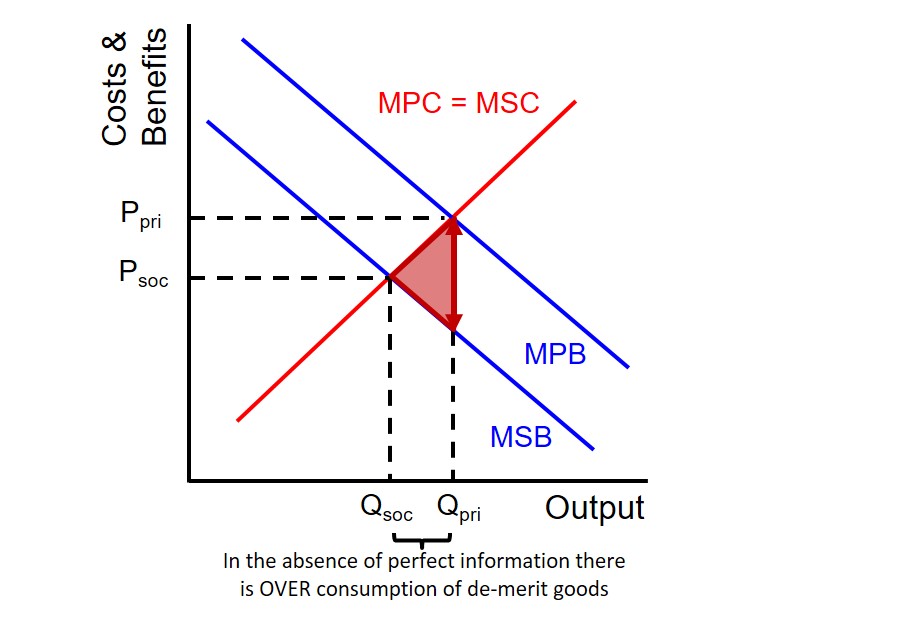A good that is over-provided by the market and as a result becomes over-consumed by consumers. Tobacco, alcohol and fast food are all examples of this type of good. This is the opposite of a merit good.
The market failure created in these types of goods is caused by a divergence between the marginal private benefit and the marginal social benefit curves. This is because when individuals consume demerit goods it releases negative consumption externalities onto society. As a result, this means that the MSB curve always lies below the MPB curve and this leads to the good being over-consumed in the market. For instance, individuals that smoke cigarettes enjoy the private benefits of smoking - the satisfaction they receive from smoking today. However, it also creates several external costs, which get passed onto society (third parties) that perhaps - due to the presence of imperfect information - the smoker does not acknowledge. The external costs of smoking include: second hand smoke, smell of cigarettes and the strain it puts on a country's health service as a result of smokers developing diseases later in life such as lung cancer. It is the fact that the smoker underestimates the long run health problems they could face from smoking, which creates the over-consumption of the good.
Below is a diagram to show an example of a market for a demerit good:

It is important to consider that not all goods which create a negative externality can instantly be recognised as a demerit good. Because classing a good as a demerit good depends on the valued judgement of the consumer i.e. smokers may not class cigarette as a demerit good.
As these types of goods always create negative externalities the government will try to intervene in the market to either reduce or eliminate the externality and the dead weight loss triangle, increasing welfare in the process. The ability to implement these policies and more importantly the effectiveness of them depends on how large the externality in the market is. For some goods, the magnitude of the externality is greater than other goods and this means the level of government intervention needs to be larger as a result. For instance, in markets such as the drugs market, government impose outright bans on the good as the externality imposed on society is so large. However, if the negative externality is smaller, then the government can use an indirect tax or educational policies to internalise the externality.